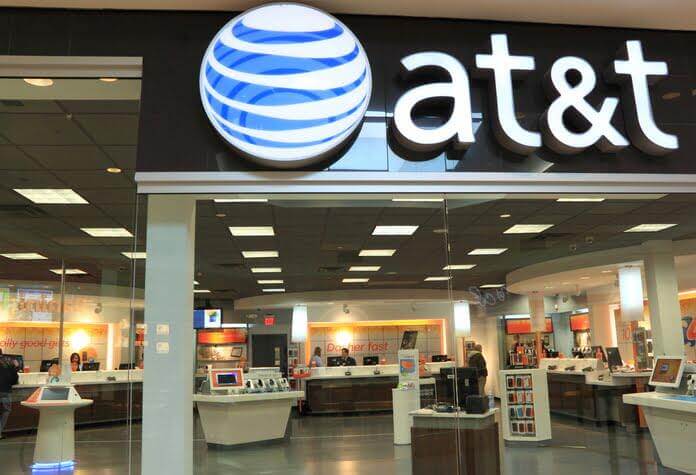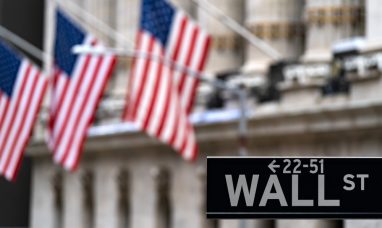AT&T (NYSE:T)
Market emotion may occasionally produce ludicrous circumstances, especially when it is at its most greedy or fearful. AT&T (NYSE:T) is presently at the fear extreme, and its FY PE of 6.7x is so low that it is less than its TTM dividend yield of 7.87 percent, as seen in the figure below. To extend our perspective, let us compare it to its nearest competitor, Verizon (VZ). As can be seen, its current TTM dividend yield of 7.87% is 100 basis points higher than its 4-year average yield of 6.91% (or almost 14% in relative terms) and 181 basis points higher than its competitor VZ’s 6.06% (or nearly 30% in relative terms).
Regarding valuation indicators, its FY PE of 6.71x is 24% lower than VZ’s PE of 8.16x. AT&T is more indebted than VZ. Thus its PE should be reduced, and a leverage-adjusted valuation metric may be more helpful. Except, as shown below, once such an adjustment is performed, the valuation disparity widens rather than narrows. Its EV/EBITDA ratio is 32% lower than VZ’s. Finally, it is only trading at 3.2x its cash flow in terms of the price-to-cash flow ratio. Of course, there are some valid explanations for such ludicrous figures, which we shall discuss shortly. However, the general thesis of this paper is that these explanations are exaggerated and that T’s significant mispricing presents an investment opportunity with potentially enormous rewards.
Operation Difficulties
There will undoubtedly be headwinds and restructuring risks as the business optimizes its operations following the WarnerMedia separation. However, according to my calculations, the selling of Warner Media would save the company around $45 billion in revenue for the fiscal year 2022. Furthermore, Warner’s sales growth potential outperforms that of the remaining business categories in AT&T. As a result, the divestment will certainly reduce T’s future revenues.
Even in the near term, there are significant headwinds from the overall slowing of the economy and the renormalization of post-pandemic consumer spending. The graphic below plainly illustrates such a slowing. The inventory is within its historical average, as seen in the top panel (which shows the inventory on a quarterly basis). Its current inventory is $3.24B, roughly in line with the $3.25B average for the last four quarters.
Next, we’ll determine if the potential gain is sufficient to compensate for such dangers.
Projected Growth and Return Potentials
The aforesaid concerns are encapsulated in the following modest growth prognosis and the considerable variance in consensus projections. As can be seen, consensus projections indicate an annual growth rate of only 0.9% CAGR in the coming years. The difference between optimistic and pessimistic projections is also significant: more than a factor of 1.26x in 2025 ($2.27 EPS versus $2.87 EPS). In terms of annual rate, the low-end predictions indicate a decrease in earnings per share (EPS) between 2022 and 2025 (from $2.38 to $2.27).
However, in my opinion, the previous estimates are overly gloomy. As described in my earlier articles, my study of its ROCE (return on capital employed) is about 30%.
In terms of reinvestment, it intends to invest $24 billion in CAPEX over the next several years (at least in 2022 and 2023) and then progressively taper off from there. Assuming a reinvestment rate of 10% on average, the organic growth rate is 3% (organic growth rate = ROCE * reinvestment rate = 30% * 10%). Given AT&T’s long-term pricing power, a 1% or 2% increase in inflation would easily raise the growth rate to the mid-single-digit range (say, 4% to 5%).
Because of the substantial value compression, even moderate growth might result in huge gains. AT&T stock, as previously said, is significantly undervalued in both absolute and relative aspects. Even compared to its track record, the valuation discount is around 14% in terms of dividend yield and 41% in terms of price-to-cash flow ratio.
Assuming a cautious growth rate of 4%, a substantial projected return may be expected with such a depressed value. As demonstrated, the total return for the following 35 years is anticipated to be 33% (low-end forecast) to roughly 99% (high-end prediction), corresponding to an annual return of 7.4% to 18.8%. Even after correcting for the aforementioned risks and its lower financial strength (B+ vs. A+ from VZ), I believe this is a very asymmetric opportunity.
Final Thoughts and Risks
And now we can see that AT&T stock prices have been stuck in a consolidation window between $17 and $21 for about a year. The market appears to be unsure of what to do with it. We like to keep solid stocks like T in such windows for at least a year (but the longer, the better) while we monitor the fundamentals. And we are not currently witnessing any significant deterioration in its fundamentals. So I consider the operational problems outlined in the second part either transient or unknown (which differ from deterioration).
Finally, there are hazards. Aside from the dangers listed above (operational issues, heavier debt, and somewhat lower financial qualities compared to VZ), investors must also have a thicker skin to handle AT&T’s price volatility. AT&T’s beta has been approximately 1.5x higher than VZ’s in the last 24 months (0.36 vs 0.22) and approximately 2x higher in the last 60 months (0.36 vs 0.22). (0.61 vs 0.34). Furthermore, I believe that using beta underestimates its genuine volatility. As previously stated, AT&T’s value in terms of price-to-cash flow is 41% lower than its historical average and 31% lower than VZ’s. In the last five years, its top price-to-cash flow ratio has been over 6.2x, nearly 2x greater than its present value. While such significant discounts make its price appealing, they also give greater insight into the degree of its real volatility.
Featured Image- Megapixl @Luckydoor
















